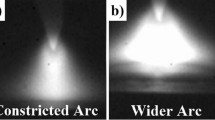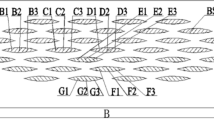Abstract
The critical current density (Jc), which is a major performance parameter of low temperature superconducting Nb-46.5 wt%Ti wire, can be improved by uniformly dispersed fine α-Ti precipitates since they serve as a flux pinning center. The high volume fraction of α-Ti precipitates at grain boundary intersections can be achieved by repetitive large deformation and intermediate heat treatments. For this aim, we investigated effect of severe plastic deformation of Nb-46.5 wt%Ti billet on the changes in microstructure and Jc by assigning equal channel angular process (ECAP) followed by groove rolling and drawing. In addition, intermediate heat treatments with different heating condition and holding time after each process were assigned to precipitate the fine α-Ti. It was observed that the curled flow lines like shear bands with the highly dense dislocations were formed after ECAP leading to recrystallization and the high volume fraction of α-Ti after subsequent heat treatment. The additional plastic deformation by groove rolling and drawing increased the volume fraction of the α-Ti and the aspect ratio of its shape. As a result, the critical current density at the lower range of magnetic field was enhanced with increasing the number of ECAP pass.











Similar content being viewed by others
Abbreviations
- A:
-
Long diameter of groove rolls (mm)
- Γ:
-
Approach angle (o)
- Ao :
-
Initial area of the billet (mm2)
- Ad :
-
Deformed area of the billet (mm2)
- B:
-
Short diameter of groove rolls (mm)
- Bc :
-
Route with rotation angle 90o in each pass of ECAP
- deff :
-
Effective area of superconducting NbTi material (mm)
- D1 :
-
Inlet diameter in drawing die (mm)
- D2 :
-
Outlet diameter in drawing die (mm)
- Ε:
-
Accumulated strain in groove rolling and drawing
- εN :
-
Accumulated strain in ECAP
- Jc :
-
Critical current density (A/cm2)
- L:
-
Approach length in drawing die (mm)
- ∆M:
-
Magnetization loop (emu/cm3)
- N:
-
Number of pass in ECAP
- R:
-
Reduction ratio (%)
- Φ:
-
Inner angle of ECAP die (o)
- Ψ:
-
Corner angle of ECAP die (o)
- ∆:
-
Shape factor
References
Hillmann, H. (1999). Interaction of metallurgical treatment and flux pinning of NbTi superconductors. Superconductor Science and Technology, 12, 348–355.
Lee, P. J., & Larbalestier, D. C. (2003). Niobium-Titanium superconducting wires: Nanostructures by extrusion and wire drawing. Wire Journal International(USA), 36(2), 61–66.
Lee, P. J., & Larbalestier, D. C. (1987). Development of nanometer scale structures in composites of Nb–Ti and their effect on the superconducting critical current densities. Acta Metallurgica, 35(10), 2523–2536.
Meingast, C., & Larbalestier, D. C. (1989). Quantitative description of a very high critical current density NbTi superconductor during its final optimization strain. II. Flux pinning mechanisms. Journal of Applied Physics, 66(12), 5971–5983.
Gajda, D., Morawski, A., Zaleski, A., Center, T., & Presz, A. (2011). Enhancement of critical current density in superconducting wires NbTi. Przegląd Elektrotechniczny, 87, 209–213.
Shin, I. S., Sim, K. H., Hwang, D. Y., Jang, K. H., Na, S. H., & Park, P. Y. (2016). Influence of the heat-treatment conditions on various types of multifilamentary Nb-46.5%Ti superconducting wires. Journal of the Korean Physical Society, 69(3), 310–315.
Lee, P. J., & Larbalestier, D. C. (1988). Determination of the flux pinning force of α-Ti ribbons in Nb-46.4 wt%Ti produced by heat treatments of varying temperature, duration and frequency. Journal Materials Science, 23, 3951–3957.
Beloshenko, V. A., Konstantinova, T. E., Matrosov, N. I., Spuskanyuk, V. Z., Chishko, V. V., Gajda, D., et al. (2009). Equal-channel multi-angle pressing effect on the properties of NbTi alloy. Journal of superconductivity and novel magnetism, 22, 505–510.
Beloshenko, V. A., Dmitrenko, V Yu., Chishko, V. V., Sokolenko, V. I., & Volchok, O. I. (2014). Effect of deformation-thermal processing using equal-channel multiangle pressing and low-temperature drawing on the superconducting properties of niobium-titanium alloys. Low Temperature Physics, 40(8), 702–706.
Lee, J. H., Kang, S. H., & Yang, D. Y. (2008). Novel forging technology of a magnesium alloy impeller with twisted blades of micro-thickness. CIRP Annals, 57, 261–264.
Kang, S. H., Lee, Y. S., & Lee, J. H. (2008). Effect of grain refinement of magnesium alloy AZ31 by severe plastic deformation on material characteristics. Journal of Materials Processing Technology, 201, 436–440.
Jin, Y. G., Son, I. H., Kang, S. H., & Im, Y. T. (2009). Three-dimensional finite element analysis of multi-pass equal-channel angular extrusion of aluminum AA1050 with split dies. Materials Science and Engineering A, A503, 152–155.
Jin, Y. G., Kang, S. H., Son, I. H., & Im, Y. T. (2008). Split die design for ECAP with lower loads. Transactions of the Korean Society of Mechanical Engineers A, 32(3), 924–930.
Kang, S. H., Lee, Y. S., & Lee, J. H. (2008). Spring-back characteristics of grain-reined magnesium alloy ZK60 sheet. International Journal of Modern Physics B, 22, 6076–6081.
Kim, K., & Yoon, J. (2015). Effect of the initial crystallographic texture on microstructure and mechanical properties of Mg-3Al-1Zn sheet alloy processed by half channel angular extrusio(HCAE). International Journal of Precision Engineering and Manufacturing, 16(5), 1021–1027.
Pholdee, N., Bureerat, S., Baek, H. M., & Im, Y. T. (2017). Two-stage surrogate assisted differential evolution for optimization of a non-circular drawing sequence. International Journal of Precision Engineering and Manufacturing, 18(4), 567–573.
Feng, Y., Zhao, Y., Pradhan, A. K., Zhou, L., Zhang, P. X., Liu, X. H., et al. (2002). Fabrication and superconducting properties of MgB2 composite wires by the PIT method. Superconductor Science and Technology, 15, 12–15.
Xu, Y., Jiao, H., Qiu, W., Misra, R. D. K., & Li, J. (2018). Effect of cold rolling process on microstructure, texture and properties of strip cast Fe-2.6%Si steel. Materials, 11, 1–12.
Srinivasan, R., Viswanathan, G. B., Levit, V. I., & Fraser, H. L. (2009). Orientation effect on recovery and recrystallization of cold rolled niobium single crystals. Materials Science and Engineering A, 507, 179–189.
Levine, E., Greenhut, I., & Margolin, H. (1973). Grain size and grain growth in an equiaxed alpha-beta titanium alloy. Metallurgical Transactions, 4, 2519–2525.
Li, J. F., Zhang, P. X., Liu, X. H., Li, J. S., Feng, Y., Du, S. J., et al. (2008). The microstructure of NbTi superconducting composite wire for ITER project. Physica C, 468, 1840–1842.
Sharkeev, Y. P., Eroshenko, A. Y., Glukhov, I. A., Sun, Z., Zhu, Q., Danilov, V. I. & Tolmachev, A. I. (2015). Microstructure and mechanical properties of Ti–40 mass% Nb alloy after megaplastic deformation effect. In: AIP Conference Proceedings, Vol. 1683, (pp. 020206-1-4).
Valiev, R. Z., Estrin, Y., Horita, Z., Langdon, T. G., Zehetbauer, M. J., & Zhu, Y. T. (2016). Fundamentals of superior properties in bulk nano SPD materials. Materials Research Letters, 4(1), 1–21.
Huang, T. H., Jiang, C. P., & Grechnikov, F. V. (2017). Effect of grain size on mechanical revolution of pure titanium and die cavity filling rate in hot squeezing mini spur-gear forming process. International Journal of Precision Engineering and Manufacturing, 18(10), 1371–1377.
Jinag, C. P. (2015). The effect initial grain size on the mechanical properties and deformability of titanium alloy in a direct extrusion process. International Journal of Precision Engineering and Manufacturing, 16(2), 301–307.
Westermann, I., Pedersen, K. O., Furu, T., Børvik, T., & Hopperstad, O. S. (2014). Effects of particles and solutes on strength, work-hardening and ductile fracture of aluminium alloys. Mechanics of Materials, 79, 58–72.
Ivasishin, O. M., Markovsky, P. E., Matviychuk, Yu V, & Semiatin, S. L. (2003). Precipitation and recrystallization behavior of beta titanium alloys during continuous heat treatment. Metallurgical and Materials Transactions A: Physical Metallurgy and Materials Science, 34(1), 147–158.
Acknowledgements
This work was supported by Industrial Technology Innovation Program (No.: 10053590) funded by the Ministry of Trade, Industry and Energy (MOTIE), Korea.
Author information
Authors and Affiliations
Corresponding author
Additional information
Publisher's Note
Springer Nature remains neutral with regard to jurisdictional claims in published maps and institutional affiliations.
Rights and permissions
About this article
Cite this article
Park, SM., Oh, YS., Kim, SJ. et al. Effect of ECAP on Change in Microstructure and Critical Current Density of Low Temperature Super-Conducting Monowire. Int. J. Precis. Eng. Manuf. 20, 1563–1572 (2019). https://doi.org/10.1007/s12541-019-00164-3
Received:
Revised:
Accepted:
Published:
Issue Date:
DOI: https://doi.org/10.1007/s12541-019-00164-3




